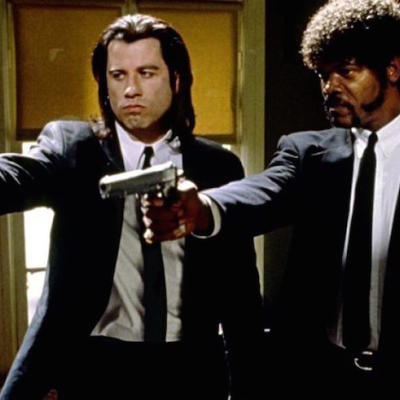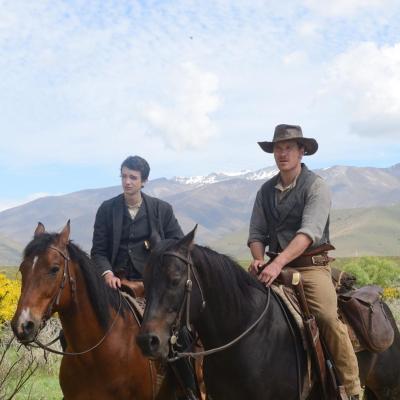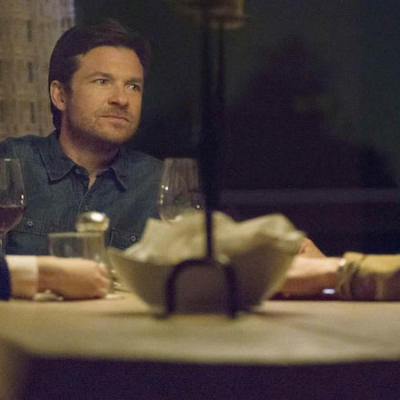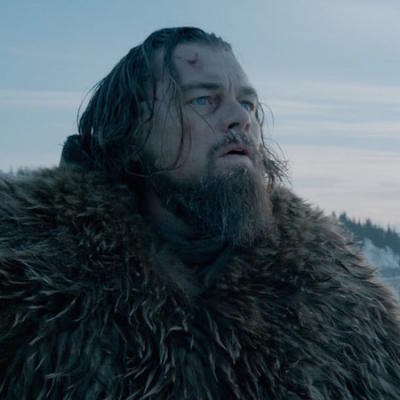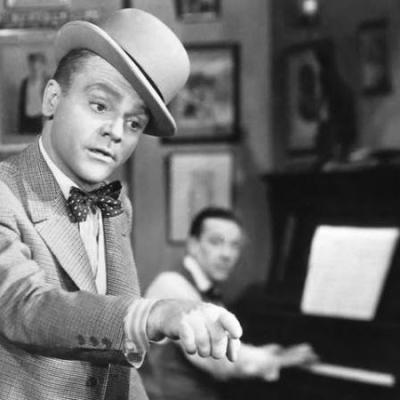A blood red screen introduces the overture to the 70mm print of Quentin Tarantino’s latest film, the tight and tense Western The Hateful Eight. The overture from Ennio Morricone may be his first complete Western score in 35 years, but its gauzy and crackling sound feels familiar and comfortable. The whole film project, from its music, to its three-hour length to its limited release on 70mm film, hearkens back to the golden age of the Hollywood epic.
That’s nothing new for Tarantino, whose gender revisionism borders on fetishism, but The Hateful Eight is among his most radical inversions of genre and structure. The film begins innocuously enough (for the notoriously violent director) with a meeting between two bounty hunters Major Marquis Warren (Samuel L. Jackson) and John Ruth (Kurt Russell), the latter of whom has a highly wanted woman Daisy Domergue (Jennifer Jason Leigh) manacled to his wrist and awaiting the hangman in Red Rock, Wyoming. Soon, dispenser of vigilante justice and supposed Red Rock sheriff Chris Mannix (Walton Goggins) joins them on their trek.
Forced by a raging blizzard to stop and take shelter in a roadhouse that is known to both the bounty hunters, the film performs a neat trick in abandoning the road movie leanings of its first act to because a tightly bottled murder mystery, bubbling with tension and suspicion. Never one to be humble, Quentin Tarantino said at the film’s Sydney premiere, “I know how to write film,” and the way he expertly combines disparate genres and styles while keeping things cohesive makes that clear.
The Hateful Eight does make a few missteps. Its pacing is unsteady, particularly in the first act when the dialogue struggles to uphold the deliberately slow progress of the story. At points certain moments feel like padding. Later on, at the beginning of the film’s second half, intrusive and unnecessary narration is introduced, plainly stating plot points that could have been expressed with more subtlety. Given that Tarantino is known for making films that flow effortlessly and with unbeatable pacing, these flaws are particularly glaring.
However, the film often falls into an engaging and engrossing rhythm. The crowded roadhouse where a large majority of the film takes place plays host to many different competing personalities who cross and re-cross each other. Kurt Russell said of Tarantino that, “He gives you the opportunity to create memorable characters, no matter what the subject matter.” Each of the actors digs deep into the characters, so that even smaller parts like Bruce Dern’s General Sanford Smithers make a strong impression.
Of his character, Samuel L. Jackson said plainly: “Smart guy; ruthless guy. He’s got his history. He’s got a story to tell,” and his understated but playful performance perfectly encapsulates that. As the only black character trapped in the roadhouse, Jackson captures his determination to be heard and even to be feared. Without great performances, The Hateful Eight, which is almost completely dependent on dialogue and exposition, would not work, but the cast rise to the challenge brilliantly.
Tarantino said that The Hateful Eight was one of the most fun films he’s worked on since Kill Bill (2003-2004) and it shows in the completed product. The jokes are frequent and brilliantly delivered, and the performances are, at times, winkingly hammy. At times, though, the almost cartoonish violence in this film, even for those who are used to Tarantino, can verge on uncomfortable, particularly with regard to the treatment of Daisy, the only female character with a significant role.
Despite its obvious flaws (which may even be redressed by the slightly shorter digital print which opens in cinemas this week), The Hateful Eight is distinctively and brilliantly Tarantino. There’s a thrill to the gleeful way he breaks the rules of cinema, by knowingly using metatextual references, anachronisms, and fascinatingly oblique structures to tell the story that he wants to tell, and that only he could.
The Hateful Eight is currently showing in an extended, 70mm version at select cinemas. A wide release of a slightly shorter digital print will follow on Thursday January 21.
